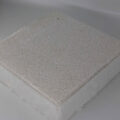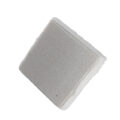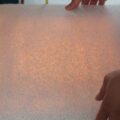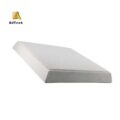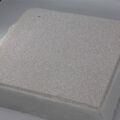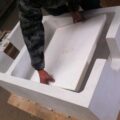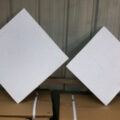40 PPI Cff manufacturer: Defect analysis and solutions for casting aluminum alloy ingots
In the production process of cast aluminum alloy ingots, if improper control occurs, various product defects often occur, especially aluminum-silicon alloys such as ADC12 and A356.
40 PPI CFF Manufacturer
gas and non-metallic inclusions in the ingot
Non-metallic inclusions (slag inclusions)
The slag mixed into the ingot or other non-metallic impurities falling into the ingot is called non-metallic inclusions.
The fracture features are black strips or flakes, and the microstructure characteristics are mostly black linear, blocky, flocculent disordered tissues, which have obvious color difference from the substrate.
Non-metallic inclusions are an important cause of delamination and many surface defects in aluminum processed products.
During heat treatment and heating, the presence of non-metallic inclusions can promote secondary porosity and the formation of bubbles.
In terms of mechanical properties, non-metallic inclusions are places where stress is concentrated, reducing the strength limit and elongation of the alloy.
In particular, the reduction in transverse elongation and dynamic mechanical properties (impact toughness, fatigue strength, and fracture toughness) is more serious.
In addition, non-metallic inclusions will also reduce the alloy’s resistance to stress corrosion.
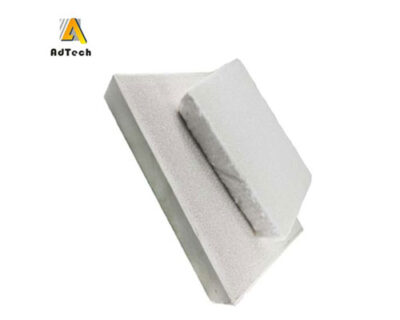
Non-metallic inclusions (slag inclusions) can usually be found when inspecting low-magnitude test pieces of the ingot.
YS67-1993 stipulates that for all alloy products, no more than two points of slag are included on the ingot test piece, and the single area is less than 0.5 mm2, otherwise it will be rejected.
Non-metallic inclusions (slag inclusions) are the most frequently occurring waste products in aluminum alloy ingots.
According to statistics, in terms of quality, the ingot scrapped due to slag inclusion accounts for 10% to 25% of the total waste. Slag inclusions are usually caused by slag, lining fragments and large-sized oxides that fall into the ingot with the liquid metal during the casting process.
The way to prevent slag inclusion is
1. Refining carefully to ensure the standing time, and filtering with glass cloth in the flow plate or funnel.
2. Shorten the transfer runner distance as much as possible, establish good transfer conditions, close all open drops in the flow channel, flow plate, and funnel to prevent fluctuations in the metal level. It is best to use the same level casting under possible conditions.
3. Thoroughly bake the transfer tool, properly raise the casting temperature, carefully slag during the casting process, and carefully clean the furnace, flow plate and other tools after casting.
4. Use clean charge.



